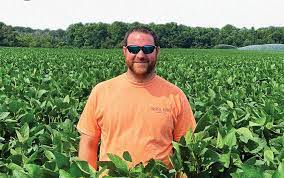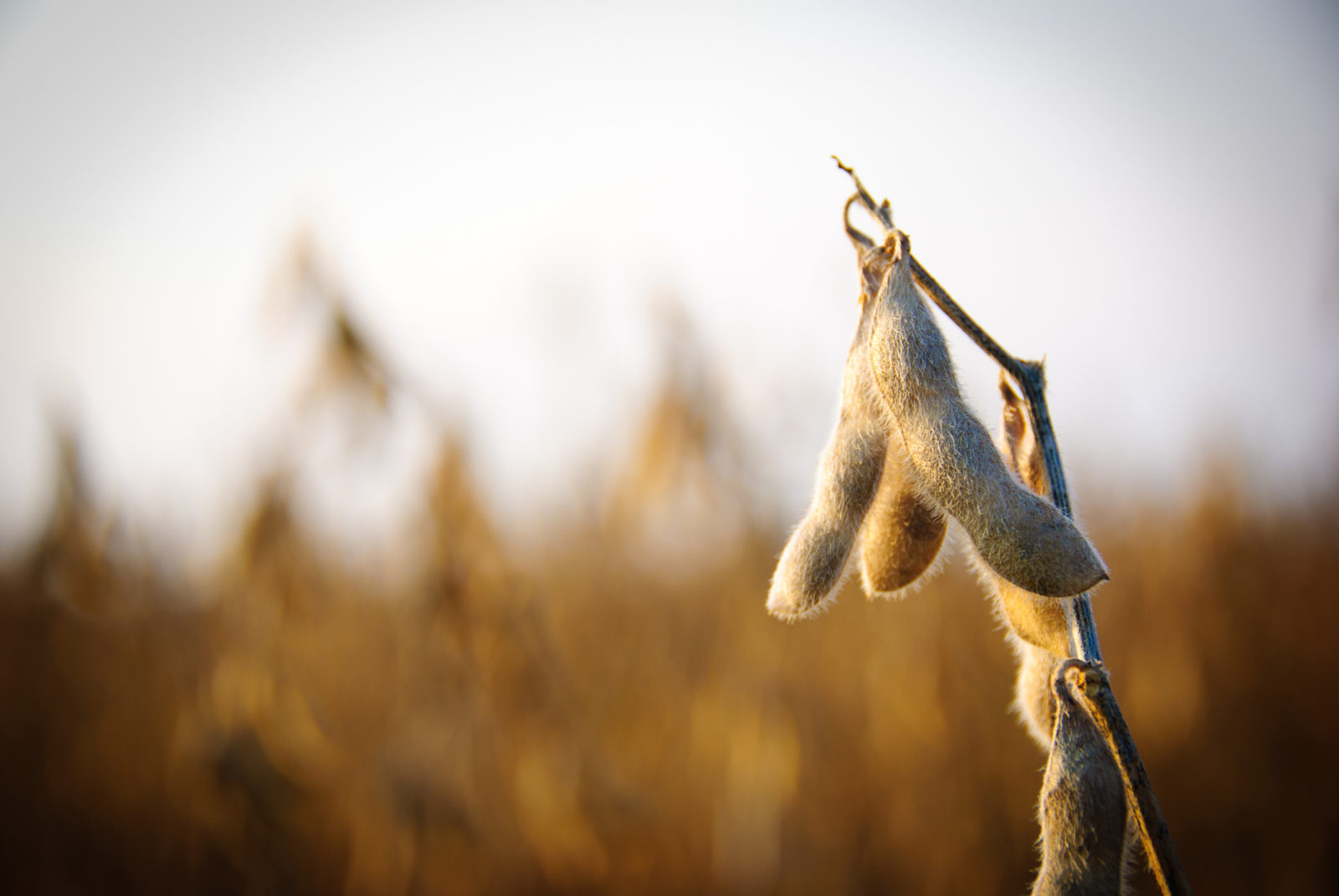Soybeans have tremendous yield potential. U.S. Soy farmer Alex Harrell proved that when he harvested soybeans averaging nearly 206.8 bushels per acre, or nearly 14.9 metric tons per hectare, setting a new world record. He grew these record-breaking soybeans in a 2.5-acre or 1-hectare irrigated plot. These soybeans shattered the previous record, set by another U.S. farmer in 2019, by roughly 8%.
Harrell and his father Rodney raise about 3,000 acres, or 1,214 hectares, of full-season and double-crop soybeans, corn, wheat and watermelons near Smithville, Georgia, in the southern U.S. He uses plots like the soybean record-breaker for on-farm research to test practices that sustainably boost yield.
He then applies proven practices from these yield-focused plots to the rest of his fields. His goal is to raise full-season soybeans with yields that average 100 bushels per acre, or 6.8 metric tons per hectare. He aims to raise double-crop soybeans, which are planted after winter-wheat harvest in mid-summer, that average 80 bushels per acre, or 5.4 metric tons per hectare.
“While we haven’t yet reached these numbers, we are learning what practices will help us achieve those yield goals across our soybean fields,” Harrell says. While Harrell has set those goals well above average, his mindset exemplifies the drive to constantly improve, which is common to U.S. farmers.
Sustainable Practices Combined with Technology Boost U.S. Soy Yield
Harrell employs several practices that help his soybeans yield. For example, in the fall he seeds a cover crop that is a mix of four different plants. In the spring, he plants soybeans and other crops into the residue of that cover crop with strip-tilling, which disturbs just the strip of soil where the seed goes into the ground.
He plants all his full-season soybeans and at least three-fourths of his double-crop soybeans in fields that have irrigation. He relies on a combination of experience and soil moisture sensors monitoring conditions in his fields to decide when to water those soybeans.
“With cover crops, I use 30% less water to irrigate my soybeans,” Harrell says. “They dramatically reduce soil erosion and improve water infiltration.”
He fertilizes his fields with poultry litter before planting. Using this type of fertilizer adds more to the soil than just nutrients for his soybeans. It adds organic matter and micronutrients that support soil health.
Harrell takes a unique approach to providing nutrients to his soybeans the rest of the season.
“I spoon-feed nutrients throughout the season based on weekly tissue samples from the leaves,” he explains. “Providing nutrients right when the plants need them makes a huge impact on soybean yield.”
He notes that applying more fertilizer than is needed, or applying it at the wrong time, has no benefit. He farms in an area with sandy soils where 5-inch, or 12.5-centimeter, rains are common. In those conditions, excess nutrients can easily move through the soil instead of being used by the crop. “I now use less fertilizer than I did before,” Harrell says.
Constant Innovation Helps U.S. Soy Realize More Yield Potential
Harrell applies innovative practices in his soybean fields that unlock new levels of yield potential.
For example, he applies plant growth regulators to encourage growth of roots and stems for the first several weeks. Then, when the soybeans can flower and develop pods and soybean seeds, he switches to a formula that encourages that type of growth. These inputs are not yet commonly used in U.S. Soy production.
“I have seen that using plant growth regulators produces more pods on each plant,” Harrell explains. “Then, fertilizing just when the crop needs specific nutrients and applying them so the plants can easily use them makes larger, heavier soybeans inside those pods.”
He looks out for future advances that will help even more. For example, while his cover crops produce a mat of residue on top of his fields that suppresses weeds early in the season, that mat isn’t completely uniform. He currently applies herbicides before the soybeans emerge to prevent the weeds that get through that mat from stealing light, moisture and nutrients from the crop.
“I would like to apply those herbicides just where the residue is light, where it is most needed,” he adds “We don’t have that technology — yet.”
His system incorporates more inputs than average, but with careful timing, he produces significantly more soybeans.
While the specific approach to sustainability and innovation vary by farmer, Harrell’s new world record demonstrates how U.S. farmers work. They will continue to rise to the challenge of consistently providing a reliable supply of U.S. Soy for customers around the world.

